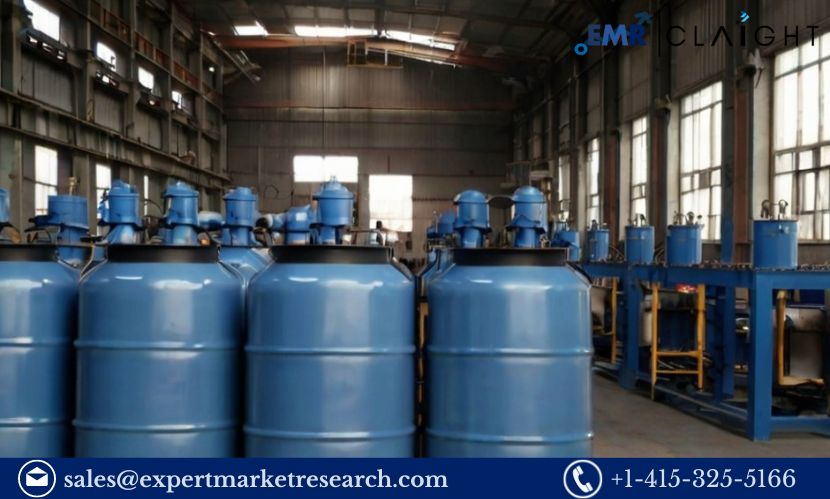
Understanding Methyl Isocyanate (MIC)
Methyl Isocyanate is a highly reactive organic compound with the formula CH₃NCO. It is primarily used in the production of:
- Pesticides: MIC is a key intermediate in the synthesis of various insecticides and herbicides.
- Pharmaceuticals: It plays a role in the synthesis of certain drugs and medical products.
- Plastics and Polymers: MIC is used in making polyurethane foams and coatings.
Due to its reactivity and potential health hazards, handling MIC requires stringent safety protocols and advanced technology.
Get a Free Sample Report with Table of Contents @ https://www.expertmarketresearch.com/prefeasibility-reports/methyl-isocyanate-manufacturing-plant-project-report/requestsample
Key Considerations for Setting Up a Methyl Isocyanate Manufacturing Plant
- Market Research and Feasibility StudyBefore embarking on the project, conduct thorough market research to understand the demand for MIC in your target markets. Analyze the competitive landscape, identify potential customers, and assess market trends. A feasibility study will provide insights into the economic viability of the project, including market size, growth potential, and investment requirements.
- Location and InfrastructureSelecting the right location for your manufacturing plant is crucial. Consider the following factors:
- Proximity to Raw Materials: Ensure access to essential raw materials like methanol and phosgene, which are used in MIC production.
- Logistics: Choose a location with efficient transportation networks for both raw materials and finished products.
- Infrastructure: The facility should have adequate utilities, such as water, electricity, and waste management systems.
- Technology and EquipmentThe production of Methyl Isocyanate requires specialized technology and equipment. Key components include:
- Reactors: For the synthesis of MIC from methanol and phosgene.
- Distillation Units: To purify and separate MIC from by-products.
- Storage Tanks: For storing MIC and other chemicals safely.
- Safety Systems: To monitor and control the production process, ensuring safe handling of the reactive MIC.
Investing in advanced technology and automation can improve efficiency and safety.
- Raw Materials and Supply ChainThe primary raw materials for MIC production are:
- Methanol: A key ingredient in the synthesis process.
- Phosgene: A highly reactive and toxic gas used in the production of MIC.
Establish reliable relationships with suppliers of these raw materials to ensure consistent quality and supply. Efficient supply chain management is crucial for maintaining production schedules and controlling costs.
- Regulations and ComplianceOperating a MIC manufacturing plant involves strict adherence to local and international regulations. Key compliance areas include:
- Environmental Regulations: Implement measures to minimize emissions and waste, and ensure proper disposal of hazardous materials.
- Safety Regulations: Develop and enforce safety protocols to protect workers and prevent accidents. This includes proper training, protective equipment, and emergency response plans.
- Quality Standards: Comply with industry standards for product quality and safety.
Obtain all necessary permits and certifications to operate legally and maintain high standards.
- Production ProcessThe production process for Methyl Isocyanate involves several stages:
- Synthesis: Methanol and phosgene are reacted in a controlled environment to produce MIC.
- Purification: The crude MIC is purified through distillation to remove impurities.
- Storage: The purified MIC is stored in specialized tanks under controlled conditions.
- Packaging: MIC is packaged for distribution, adhering to safety regulations and ensuring safe handling.
Implementing rigorous quality control measures at each stage is crucial for producing high-quality MIC.
- Marketing and Sales StrategyDeveloping a strong marketing and sales strategy is essential for the success of your MIC manufacturing plant. Consider the following:
- Target Markets: Identify and approach potential customers, including pesticide manufacturers, pharmaceutical companies, and plastic producers.
- Promotion: Utilize marketing channels such as industry conferences, online platforms, and direct sales to promote your products.
- Customer Relationships: Build strong relationships with clients through reliable delivery, quality products, and excellent customer service.
- Financial PlanningA detailed financial plan is vital for managing your plant’s budget and ensuring profitability. This should include:
- Initial Investment Costs: Expenses related to plant setup, equipment purchase, and raw materials.
- Operational Expenses: Costs for labor, maintenance, utilities, and ongoing raw material procurement.
- Revenue Projections: Forecasted sales based on market research and pricing strategies.
- Profit Margins: Analysis of potential profit margins and return on investment.
Securing funding through loans, investors, or grants may be necessary to support the initial setup and ongoing operations.
Frequently Asked Questions (FAQ)
What are the primary uses of Methyl Isocyanate?
Methyl Isocyanate is used primarily in the production of pesticides, pharmaceuticals, and plastics. It serves as an intermediate in the synthesis of various chemicals and materials, contributing to its widespread industrial applications.
What are the main challenges in setting up a MIC manufacturing plant?
Key challenges include managing the hazardous nature of MIC, ensuring safety and environmental compliance, and handling the reactive raw materials. Additionally, maintaining consistent product quality and navigating regulatory requirements can be challenging.
How can I ensure the safe handling of Methyl Isocyanate?
Ensuring the safe handling of MIC involves implementing stringent safety protocols, such as proper training for employees, using protective equipment, and maintaining robust emergency response plans. Investing in advanced safety systems and regular maintenance of equipment are also crucial.
What are the environmental impacts of MIC manufacturing?
MIC manufacturing can have significant environmental impacts, including emissions of toxic substances and waste generation. To mitigate these effects, adopt sustainable practices such as controlling emissions, recycling waste, and adhering to environmental regulations.
How much does it cost to set up a MIC manufacturing plant?
The cost of setting up a MIC manufacturing plant varies widely based on factors such as plant size, technology, location, and scale of production. Initial investments can range from several million to tens of millions of dollars. A detailed feasibility study will provide a more accurate estimate.
Media Contact:
Company Name: Claight Corporation
Contact Person: Lewis Fernandas, Corporate Sales Specialist — U.S.A.
Email: [email protected]
Toll Free Number: +1–415–325–5166 | +44–702–402–5790
Address: 30 North Gould Street, Sheridan, WY 82801, USA
Website: www.expertmarketresearch.com
Aus Site: https://www.expertmarketresearch.com.au/